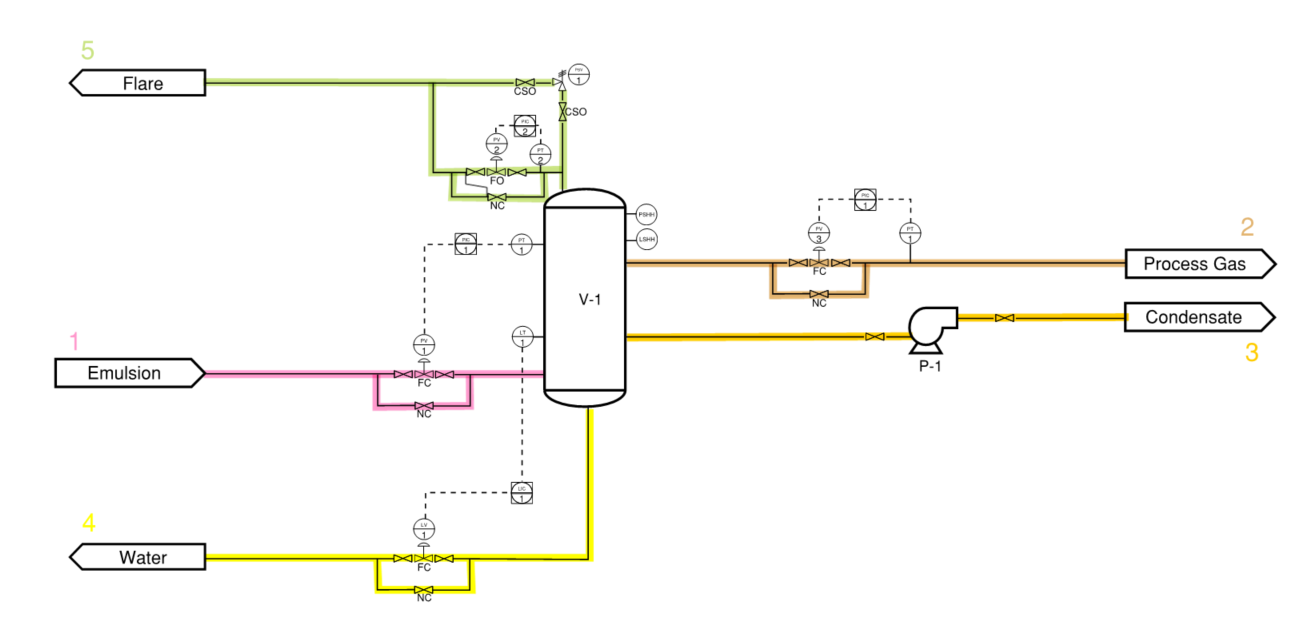How to Node P&IDs for a HAZOP
To make a chemical or industrial process easier to analyze in a HAZOP study, the process is split up into different sections, called nodes. It is often best practice to determine nodes based on consistent parts of a process, whether they are portions of the main process or separate support systems. This allows HAZOP participants to be thinking consistently about each process instead of jumping back and forth between separate materials, phases or processes. Ultimately, the size and sequence of the nodes will determine the efficiency of the HAZOP.
Tips for Node Creation
Perform a high level review of all the P&IDs and find the main process flows and functions. Take note of major equipment and branches in the process such as at separators and reactors
Keep nodes to one substance and one phase (liquid or gas) and separate them by colour. Provide a numbered legend to the HAZOP team
Reserve node breaks for process/substance/phase interfaces such as separators, boilers, condensers, chemical injection joins, PSVs and sometimes manual valves for things such as drain systems
Order the nodes following the general process flow and with main processes first and support systems later
In large processing plants, nodes may also be divided by process unit if different operators or engineers are responsible for different units
Common Types Nodes
Chemical injection
Emulsion
Produced Water
Sales Oil or Gas
Sour oil, gas or water
High pressure steam, low pressure steam
Boiler feed water
Chemicals: antifoam, amine, methanol, etc.
Flare
Blanket gas
Instrument Air
Drain
Firewater/Foam system
Let’s take a look at this simplified example below.
Here, we have a simplified P&ID that shows a vessel that separates an incoming emulsion into 3 different phases: process gas, condensate and water. Since all of these process streams have different physical and chemical properties, they have all been nodded separately and with a distinct color.


